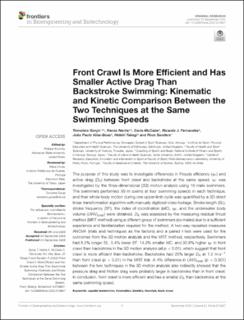| dc.contributor.author | Gonjo, Tomohiro | |
| dc.contributor.author | Narita, Kenzo | |
| dc.contributor.author | McCabe, Carla | |
| dc.contributor.author | Fernandes, Ricardo J. | |
| dc.contributor.author | Vilas-Boas, João Paulo | |
| dc.contributor.author | Takagi, Hideki | |
| dc.contributor.author | Sanders, Ross | |
| dc.date.accessioned | 2021-02-01T10:28:40Z | |
| dc.date.available | 2021-02-01T10:28:40Z | |
| dc.date.created | 2020-10-05T15:47:16Z | |
| dc.date.issued | 2020 | |
| dc.identifier.issn | 2296-4185 | |
| dc.identifier.uri | https://hdl.handle.net/11250/2725516 | |
| dc.description | This is an open-access article distributed under the terms of the Creative Commons Attribution License (CC BY). The use, distribution or reproduction in other forums is permitted, provided the original author(s) and the copyright owner(s) are credited and that the original publication in this journal is cited, in accordance with accepted academic practice. No use, distribution or reproduction is permitted which does not comply with these terms. | en_US |
| dc.description.abstract | The purpose of this study was to investigate differences in Froude efficiency (ηF ) and active drag (DA) between front crawl and backstroke at the same speed. ηF was investigated by the three-dimensional (3D) motion analysis using 10 male swimmers. The swimmers performed 50 m swims at four swimming speeds in each technique, and their whole body motion during one upper-limb cycle was quantified by a 3D direct linear transformation algorithm with manually digitized video footage. Stroke length (SL), stroke frequency (SF), the index of coordination (IdC), ηF , and the underwater body volume (UWVbody) were obtained. DA was assessed by the measuring residual thrust method (MRT method) using a different group of swimmers (six males) due to a sufficient experience and familiarization required for the method. A two-way repeated-measures ANOVA (trials and techniques as the factors) and a paired t-test were used for the outcomes from the 3D motion analysis and the MRT method, respectively. Swimmers had 8.3% longer SL, 5.4% lower SF, 14.3% smaller IdC, and 30.8% higher ηF in front crawl than backstroke in the 3D motion analysis (all p < 0.01), which suggest that front crawl is more efficient than backstroke. Backstroke had 25% larger DA at 1.2 m·s −1 than front crawl (p < 0.01) in the MRT trial. A 4% difference in UWVbody (p < 0.001) between the two techniques in the 3D motion analysis also indirectly showed that the pressure drag and friction drag were probably larger in backstroke than in front crawl. In conclusion, front crawl is more efficient and has a smaller DA than backstroke at the same swimming speed. | en_US |
| dc.language.iso | eng | en_US |
| dc.subject | aquatic locomotion | en_US |
| dc.subject | kinematics | en_US |
| dc.subject | kinetics | en_US |
| dc.subject | freestyle | en_US |
| dc.subject | back crawl | en_US |
| dc.title | Front Crawl Is More Efficient and Has Smaller Active Drag Than Backstroke Swimming: Kinematic and Kinetic Comparison Between the Two Techniques at the Same Swimming Speeds | en_US |
| dc.type | Peer reviewed | en_US |
| dc.type | Journal article | en_US |
| dc.description.version | publishedVersion | en_US |
| dc.rights.holder | © 2020 Gonjo, Narita, McCabe, Fernandes, Vilas-Boas, Takagi and Sanders. | en_US |
| dc.source.journal | Frontiers in Bioengineering and Biotechnology. 2020, 8, Artikkel 570657 | en_US |
| dc.identifier.doi | 10.3389/fbioe.2020.570657 | |
| dc.identifier.cristin | 1837219 | |
| dc.description.localcode | Institutt for fysisk prestasjonsevne / Department of Physical Performance | en_US |
| cristin.ispublished | true | |
| cristin.fulltext | original | |
| cristin.qualitycode | 1 | |
